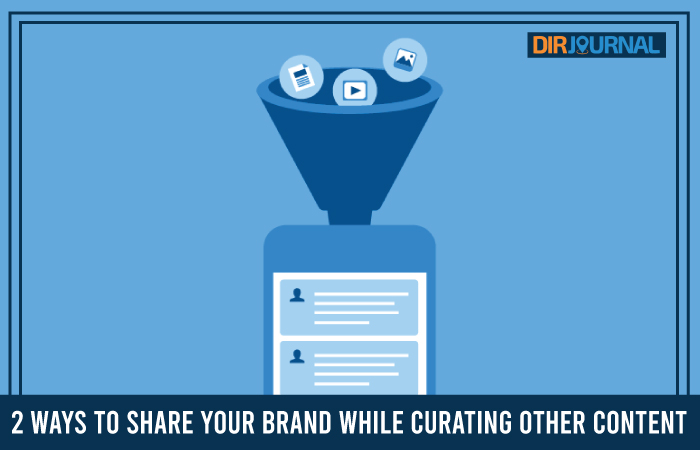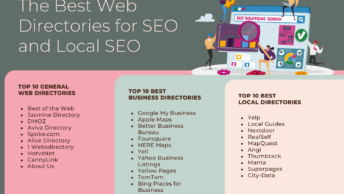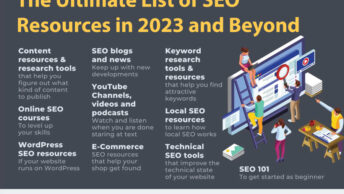Maybe a better way to put that is “Two Tools That Will Help You Share the ‘Brand of You’ While Curating Other Content.” That would have been a very long heading, indeed! The key thing here is a way to share your brand, even while your are sharing others’ content. Let’s dig into this topic further.
The Brand of YOU
We all have a brand. We all have the opportunity to brand ourselves, our reputation, what we are known for, our integrity, our thoughts and perspectives. Of course, that particular list may not be the list for you, but that is an example of some elements in the brand of YOU.
Now, you likely work for another brand. For example, the company you work for would have their own brand. That does not negate the fact that you have your personal brand. Granted, you do not want to be spending all of your time while you are on the job, promoting your personal brand. If you do, you may not have a job anymore. But, even while you are promoting the company brand, your brand shines through to demonstrate who you are.
Here is another way to look at it. If you are the one who tends to bring in coffee and doughnuts, say, more often than others at the company where you work, you may have a personal brand that reflects what a nice sharing person you are. That is a part of the brand of YOU.
Also, just because the list, above, includes words like integrity, etc., that does not mean that that element has to exist for someone’s brand. That is an example of something that people may know of you. These “elements” become something that you are known for, and therefore, part of your brand.
Let’s use another example. The example of Shock Jock Howard Stern is an example of someone who has a brand of shocking people. Possibly the list, above, is not the list that is important to Mr. Stern, for his brand. For Mr. Stern, it is important that he is true to his brand, however he and his team define that brand.
For more discussion on brand (including brand kits, too), visit this slideshare by yours truly.
Curation Defined
Last week, we presented the article, “4 SemiAutomatic Content Curation Tools.”
There are a couple of different options for content. There is original content (time-consuming, but original). There is also the curation of content by other brands. In some cases, people spend all of their time creating original content and some others spend all of their time curating content. Most of us fit in that 80-95% group that creates and curates.
The tools that we are discussing today are not necessarily curation tools. For that, you will want to refer to the article referenced above, which includes four curation tools. However, if we take a step back and include the sharing of other people’s content, then the tools, today, fit that bill. They can be included in the content curation strategy, as a whole.
So, what is the big deal? These tools allow you to include the brand of YOU! Let’s read further, to understand the big picture.
Meddle.it
I have to admit, the concept for this article really should be credited to Ted Coine, of Meddle.it. During our interview (below), he discussed the need for people to share their thoughts as their thoughts and ideas and not just a comment on a blog article. There is nothing wrong with commenting, but why not turn that comment into something that extends your brand and your brand awareness?
Even though we started this article with a discussion of the brand of YOU, you can still use these tools as a part of your company brand and curation strategy, as well.
Meddle.it allows you to comment with your thoughts about an article or content piece as if you are leaving a comment on a blog article. However, instead of just leaving the comment on that article, it can be shared with others via social networks and sharing, as a “meddle.” Also, at the end of the day, you have a page of meddles on the meddle.it web site showing your thoughts on different topics (or the same topic, if you so choose). As Mr. Coine points out, you can even make an article out of your meddles!
Meddle.it addressed a couple of pain points. The first is the ability to take credit for your comments, your intellectual property, all in one place. The other pain point is that of the lack of time. Since you are likely already reading content on the web, you can create your next article by sharing your thoughts via meddle.it. For me, personally, I still try to leave comments on the article, but I also create meddles and even links to other articles that I have written on the subject. This helps when I put together articles based on the meddles, as the articles are already linked and easy to include.
Snip.ly
Snip.ly has only been around for a year. As developed as snip.ly is, I was surprised it was so young! The age of snip.ly was referenced in the interview with “Product Guy” (and co-founder), Michael Cheng, in the video below.
Snip.ly allows you to put a comment, similar to meddle.it, on a piece of content before sharing it with your network and followers. The idea, as Michael Cheng explains, is that we often spend all day sharing other people’s content and that we should also get a bit of the credit for sharing it. In theory, we could spend, say, 80% of our day sharing content, and without snip.ly (or other tools, like meddle.it), there may be no reference to our own brand beyond the use of our social account. Tools like snip.ly allow us to insert a bit of our brand, sharing it alongside the sharing of the original content. It also provides exposure for the original content creator, providing a referral to their content that may not have existed before. Granted, we could have shared it directly out of our social account, but snip.ly allows us to communicate with our followers during the process.
Snip.ly may also be used for other strategies. For example, you may want to share your own content, including a CTA (call to action) on your own content to help highlight what it is that you are suggesting to your followers and community.
Social Responsibility
With both of these tools, and any tool, for that matter, there is the opportunity to be insensitive, even unkind to the point of lacking ethics, and use these tools in an unethical manner.
What impressed me, during these interviews (and other interviews with tool developers), was how much these developers and tool CEOs want to contribute to the internet in “giving back.” Oh, they may be generating income off of their tool (they have to eat!), but many times their stories start with that desire to help people.
Based on this commonality with the different tool companies, it is easy to see why their first thought is the functionality for the user and that spamming.. well, it just isn’t done!
Regardless of what we are doing, online, or in life, the social responsibility lies on us on how we use something, like these tools.. whether we use it for good or use it for something not so ethical. Fortunately, this is something that both of these companies (and others) have addressed and built-into their revisions on their tools, to help identify abuse of their tool and to put a stop to it.
Now, it is our turn to do our part in contributing to the world we live in, to whatever extent we choose. Also, it is our opportunity to use these tools to brand ourselves.







